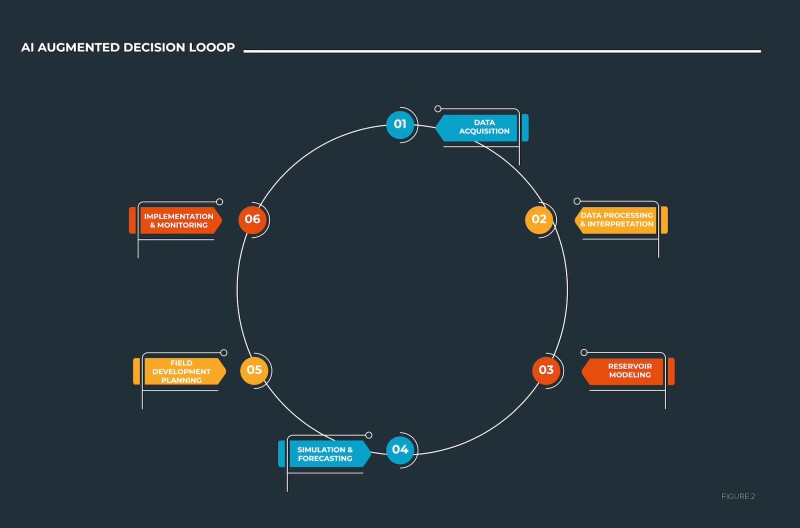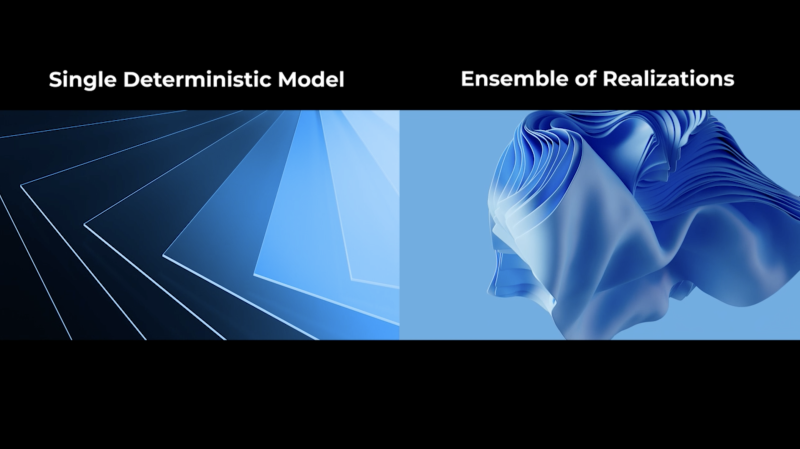This article explores how the pursuit of a "perfect" reservoir model may be hindering progress in an industry increasingly shaped by data, uncertainty, and AI. Drawing on the perspectives of Michael Thambynayagam and the lessons from Endeavor’s cross-industry work, we propose a shift from deterministic thinking to probabilistic workflows. Instead of over-calibrated models based on static inputs, we advocate for generative AI and real-time data fusion to produce a living, learning view of the subsurface.
The Reservoir Model Dilemma
For decades, the oil and gas industry has been fixated on deterministic reservoir models. These models are typically built from painstaking integration of seismic data, core samples, logs, and production history. But this exhaustive process often leads to just one answer—an illusion of certainty in a domain defined by variability.

As Michael Thambynayagam noted in his JPT guest editorial, reservoir engineering must evolve beyond linear workflows and static models. True value lies in how we interpret uncertainty—not eliminate it. He argued for a transition from solving fixed, forward problems to dynamic inverse modeling, continuously informed by new data.
From Static to Situational Physics
Static data—logs, cores, seismic volumes—have long dominated modeling efforts. Yet much of what matters happens in real time: pressure responses, flow rates, microseismic events. Thambynayagam urges us to consider “situational physics,” where models evolve with new context.
This is where AI excels. Generative models and digital twins allow engineering teams to run hundreds of simulations, testing assumptions and exploring sensitivities. Instead of perfecting one version, they interrogate a landscape of possibilities, converging on what matters most.
AI in Action: From Forecasting to Foresight
Companies like SLB, Chevron, and Tachyus are embedding AI into their reservoir workflows. These tools accelerate history matching, automate model calibration, and flag anomalies. Devon Energy uses AI to optimize drilling efficiency, while BP leverages predictive analytics to reduce capital risk.

At Endeavor, we serve as technical and strategic advisors. Our role is to help clients evaluate which technologies to adopt, peer review their modeling strategies, and guide high-level decisions around field development planning. In our work, we've seen success translating methodologies from healthcare into energy, such as CorrelateIQ—a tool that integrates disparate data streams into actionable insights. Think of it as a real-time ICU monitor for your reservoir: continuously learning, alerting, and adjusting.

Why This Matters Now
As Thambynayagam wrote, “data at rest” tells part of the story. “Data in motion” completes it. Embracing AI doesn’t replace physics—it enhances our ability to apply it where and when it counts. Probabilistic intelligence isn’t about being vague. It’s about being precise where precision matters—and fast where time is critical.
Conclusion
Perfection is no longer the goal. Progress is. A reservoir model should be a tool for decision-making, not an academic exercise. Through AI, probabilistic thinking, and metaknowledge—the awareness of what we do and don’t know—we can help clients make better decisions, faster.
We’re not just tracking technology trends. We’re helping clients understand, challenge, and strategically align them with their business objectives.
For Further Reading
Guest Editorial: 2025 Perspective: Digital Transformation in Oil and Gas—From Evolution to Shockwave by M. Thambynayagam, JPT.
Digital Transformation: Quest for Operational Efficiency by M. Thambynayagam, JPT.
Generative AI for Field Development Planning, SLB.
How GenAI is Driving the Art of the Possible, Baker Hughes.

Lumay Viloria, SPE, is a senior energy advisor at Endeavor Management with over 25 years of leadership in reservoir management, field development, and technical talent development. She combines deep subsurface expertise with strategic advisory for innovation, organizational transformation, and cross-disciplinary collaboration.

John Farrelly is a subsurface, assurance, and project management expert with 35 years experience in acreage capture through field optimization, with a track record of generating significant value in basins worldwide.

